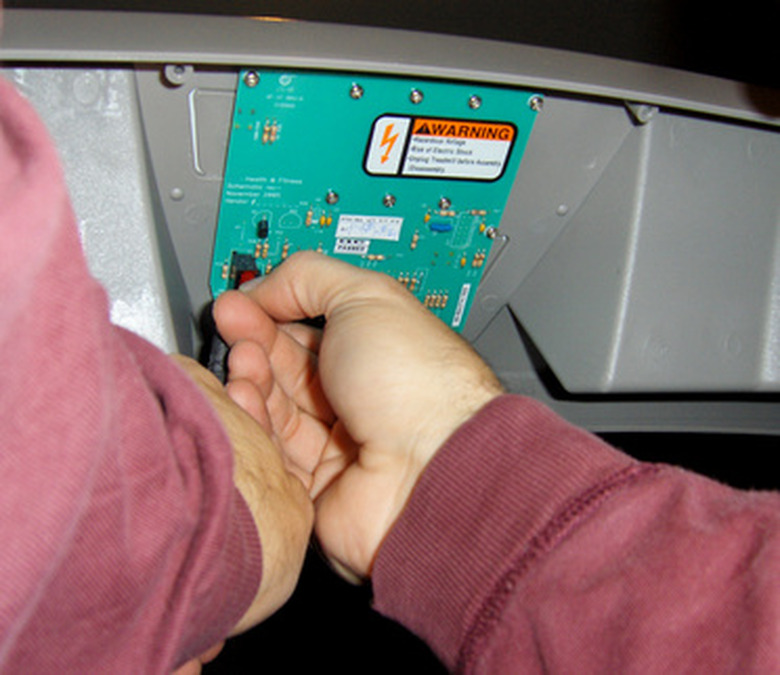How To Size Three Phase Circuit Breakers
Circuit breakers are designed to protect the circuit, and especially the cables, to which they are connected. They are rated for voltage, continuous current and short circuit current. A breaking tripping curve graphically presents the circuit breaker's characteristics, and gives length of time a breaker will carry a certain current before tripping. Three phase circuit breakers are sized according to the current carrying capacity of the cable of the circuit which they are protecting, according to the short circuit current of the circuit and according to the current characteristics of the connected loads.
Step 1
Select circuit breakers rated for the voltage and for the short circuit current of the system where they are to be installed. For residential applications, the short circuit capacity can be obtained from the electric utility, and it is generally the same for all similar connections in a neighborhood. For larger commercial or industrial applications, a short circuit calculation to determine the short circuit current available in the particular system will have to be carried out by an electrical engineer.
Step 2
Select the individual circuit breakers based on total connected load times 1.25. The 1.25 is required to compensate for breaker heating when installed in a panel next to other circuit breakers. Select the next largest standard current rating and select cables according to the circuit breaker continuous current ratings. Typical sizes for circuit breakers are 15A, 20A , 30A and 40A, which will require cables of AWG #14, #12, #10 and #8 respectively.
Step 3
Check for large non-linear loads such as transformers or motors. These loads have high starting currents which will trip breakers even though there is no danger of overload. Check the nameplates and documentation for starting or inrush currents. If these are not listed, multiply the full load current by 6 and check the breaker curves to make sure this current will not trip the breaker. Starting currents persist for several seconds so, if the starting current on the breaker curve falls to the right of the curve, select a larger breaker and make sure the corresponding larger cable is used.
Cite This Article
MLA
Markgraf, Bert. "How To Size Three Phase Circuit Breakers" sciencing.com, https://www.sciencing.com/size-three-phase-circuit-breakers-7887566/. 24 April 2017.
APA
Markgraf, Bert. (2017, April 24). How To Size Three Phase Circuit Breakers. sciencing.com. Retrieved from https://www.sciencing.com/size-three-phase-circuit-breakers-7887566/
Chicago
Markgraf, Bert. How To Size Three Phase Circuit Breakers last modified March 24, 2022. https://www.sciencing.com/size-three-phase-circuit-breakers-7887566/
